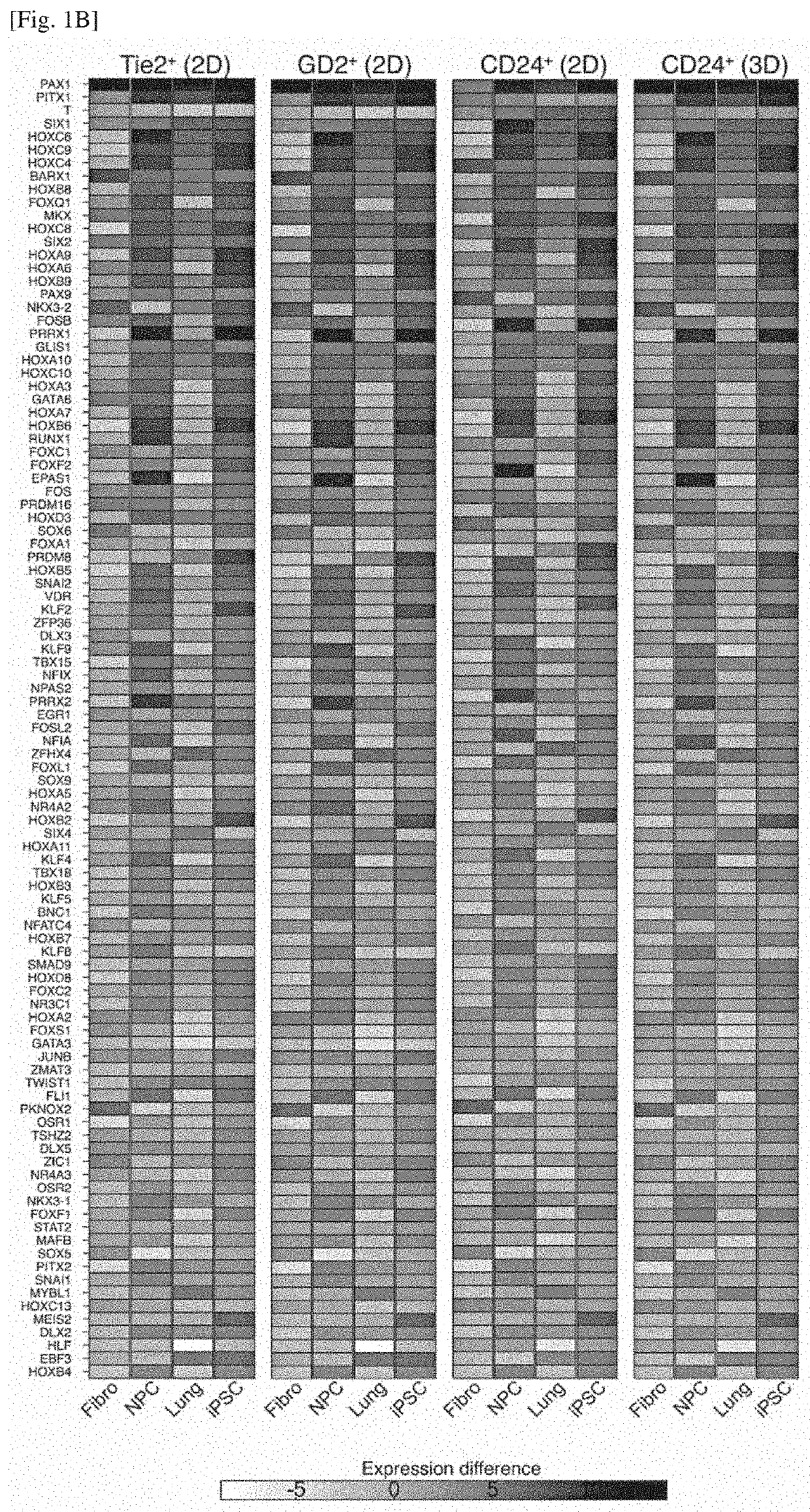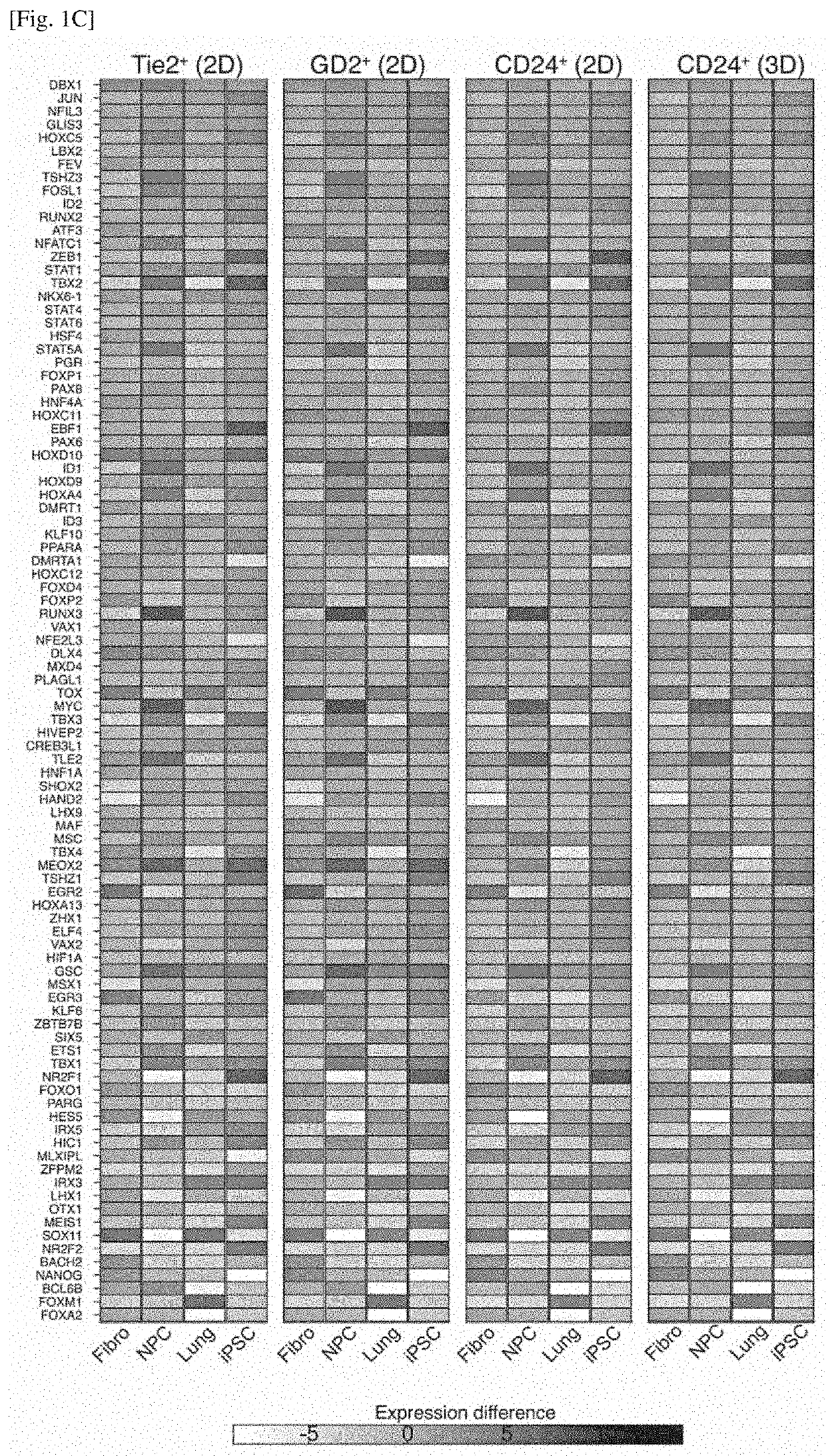Differentiation inducer containing nucleus pulposus progenitor cell master regulator transcription factors, method for producing induced nucleus pulposus progenitor cells, and use of induced nucleus pulposus progenitor cells
a technology of transcription factors and differentiation inducers, which is applied in the field of transcription factors (nucleus pulposus cell master regulator transcription factors), can solve the problems of affecting the development and use placing significant social and economic burdens. , to achieve the effect of excellent proliferative capacity and production of spherical colony-forming units,
- Summary
- Abstract
- Description
- Claims
- Application Information
AI Technical Summary
Benefits of technology
Problems solved by technology
Method used
Image
Examples
examples
(1) Human Nucleus Pulposus Tissue
[0145]In conducting this study, collection and use of human tissue samples were examined and approved by the institutional ethics review committee of Tokai University School of Medicine. Surgically excised tissue materials collected only from patients which have provided their informed consent were used.
(2) Tissue Collection, Cell Separation, and Growth Culture
[0146]Intervertebral disc tissues were obtained from patients undergoing surgery associated with intervertebral hernia, degenerative disc disease, or scoliosis. The tissues were collected in saline and examined visually to separate gelatinous nucleus pulposus tissues from degenerated nucleus pulposus or annulus fibrosus tissues. The collected samples were cryopreserved at about −196° C. in a sufficient amount of CellBanker (R) cryopreservation solution (Nippon Zenyaku Kogyo Co., Ltd., Japan) or subjected to cell separation. The tissues were finely chopped into 1 cm3 fragments to obtain human nu...
PUM
| Property | Measurement | Unit |
|---|---|---|
| concentration | aaaaa | aaaaa |
| concentration | aaaaa | aaaaa |
| concentration | aaaaa | aaaaa |
Abstract
Description
Claims
Application Information
 Login to View More
Login to View More - R&D
- Intellectual Property
- Life Sciences
- Materials
- Tech Scout
- Unparalleled Data Quality
- Higher Quality Content
- 60% Fewer Hallucinations
Browse by: Latest US Patents, China's latest patents, Technical Efficacy Thesaurus, Application Domain, Technology Topic, Popular Technical Reports.
© 2025 PatSnap. All rights reserved.Legal|Privacy policy|Modern Slavery Act Transparency Statement|Sitemap|About US| Contact US: help@patsnap.com



